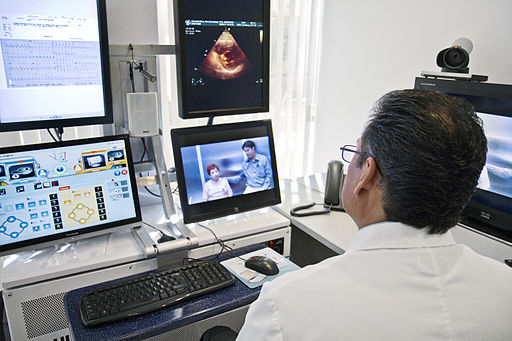
Telehealth is a burgeoning industry in markets worldwide. The global telemedicine industry is expected to reach $35 billion by 2020[1]. Medical industry statistics project that telemedicine consultations will surge to 160 million cases by 2020, a 700 percent increase since 2015.
More than 20 million Americans accessed remote healthcare services in 2017, according to the American Telemedicine Association. Various factors drive the need for telemedicine care. Many people living in isolated or rural areas of the country may not have ready access to a healthcare facility. Some communities may have a shortage of physicians and/or medical specialists. The demographic that benefits most from telemedicine care is the growing number of elderly Americans. Many senior living facilities are using patient video conferencing, enabling healthcare professionals to diagnose ailments and prescribe treatments remotely.
Delivering telehealthcare services creates new liability exposures for both medical professionals and their professional liability carriers. Telemedicine regulations can vary by state with regard to informed consent, standard of care, credentialing of providers, and remote prescription practices. Professional liability policies historically responded to allegations of medical malpractice by a healthcare provider in a traditional setting such as a physician’s offices or hospital setting. However, healthcare providers now face potential liability for risk inherent in the telemedicine technology itself when for example medical treatment is afforded remotely through a monitor/internet connection.
Licensing is also an area of potential exposure for the healthcare provider if they do not conform with state law. Medical professionals must be properly licensed in the states where they provide care, but the telemedicine platform allows the patient’s location to be anywhere in the country. The risk of privacy breaches and illegal access to personally identifiable information via the telehealth platforms present areas of increased focus for healthcare professionals and their professional liability and cyber carriers. According to Health Data Management, the data breach problem in healthcare has entered crisis mode. In 2016, 36 percent of all breaches and 44 percent of all records compromised were healthcare-related. Those breaches resulted in the theft of 15.4 million healthcare records.
As telemedicine becomes more prevalent, there is not one discipline with sufficient perspective to solve emerging challenges effectively. Insurance production specialists and brokers should clearly understand current healthcare liability policies to assess coverage response. Clinical input is necessary to determine diagnosis and treatment of the injury, infection, minor affliction or other ailment. Technology experts can address potential cyber and privacy exposures, as well as the technical aspects of the procedural implementation. Billing and finance team members should be involved to determine how to manage telemedicine-related medical reimbursements. Currently, 29 states and Washington, D.C. do mandate reimbursements for some telemedicine services, but amounts are governed by state guidelines. Legal and compliance professionals can assess contractual, jurisdictional and licensure issues.
The advantages of telemedicine – speed, efficiency and broader patient outreach – create new challenges within the healthcare industry. Taking a holistic, cross-disciplinary team approach to address advancement of the telemedicine platform will only improve patient outcomes. By working together to embrace telemedicine, healthcare providers and their insurance partners can deliver quality patient care, while protecting medical professionals and healthcare facilities from potential risk of loss.
Please visit Ironshore.com for all disclaimers.
This post originally appeared on Ironshare.com







Leave A Comment